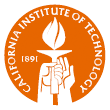Team:Caltech/Project/Population Variation
From 2008.igem.org
| Line 2: | Line 2: | ||
Content= | Content= | ||
| - | <div style="font-size:18pt;"> | + | <div style="font-size:18pt;line-height:1.1"> |
| - | <font face="verdana" style="color:#CC3300">Asynchronous Random State Generator | + | <font face="verdana" style="color:#CC3300">Population Variation:</font></div><div> |
| + | <div style="font-size:14pt;line-height:1.1"><font face="verdana" style="color:#CC3300">Construction of an Asynchronous Random State Generator</font></div> | ||
__NOTOC__<br> | __NOTOC__<br> | ||
==Introduction== | ==Introduction== | ||
Revision as of 01:44, 21 October 2008
|
People
|
Population Variation: Construction of an Asynchronous Random State Generator
IntroductionBiological circuits are commonly introduced into cells to produce non-native functions. Such functions include the production of antimalarial drugs in yeast cells1, the detection of light by bacterial cells2, and the enzymatic breakdown of bacterial biofilms by bacteriophages3. However, a problem arises when dealing with functions that inhibit the reproduction of cells. For example, the overproduction of certain compounds may burden cells with such a heavy load that they grow at a slower rate. Such production may involve lysing the cell to release compounds into solution. Once a cell is lysed, it can no longer produce progeny. If all the cells in a colony lyse, then the cell line may eventually die. One solution is to introduce cellular differentiation. Two states can be created in a cell: one in which the cell simply grows and replicates, and another in which the fatal function is turned on. Cells in the former state can produce progeny, and the progeny that they produce can either be in the former or latter states. Cells that differentiate into the latter state can die off without directly affecting the viability of the cell line. Thus, differentiation allows for the incorporation of fatal functions into cells. Random StateDifferentiation can also be used to combine multiple non-compatible functions into a single cell line. In this case, only one function will be turned on in each cell at any time, but the cell population will express the entire set of functions. Two functions may be non-compatible if they compete for the same resources inside a cell or if they signal through the same intracellular components. These two functions could be simply placed into separate cell lines, but if these two cell lines have different growth rates, one cell line would outcompete the other. Differentiation separates different functions into individual cells and allows the entire cell line to express multiple functions. In such a system, cells start off in an undifferentiated state. As undifferentiated cells replicate, their offspring can stay in the current state or switch into one of the mutually-exclusive states. As long as cells divide faster than they differentiate, the reproduction of undifferentiated cells maintains the undifferentiated population, which ensures that the entire cell line is kept alive. Thus, fatal and mutually-exclusive functions can be incorporated into cell lines by utilizing cellular differentiation. Random TimeIt is also important to have cells differentiate at random times. Having asynchrony ensures that not a large portion of the population will differentiate at once. Doing so might leave too few undifferentiated cells to maintain the population. It is hard to preserve the condition that cells divide faster than they differentiate if there are bursts in time in which many cells differentiate into terminal states. In addition, if the environment the cells are in continuously changes, cells may differentiate into a particular state that is incompatible with the current environment. For example, that particular function may be useless in the current environment, or the performing that function in such an environment may lead to the cell’s death. Thus, spreading out the time during which cells differentiate increases the chances that an individual cell committed to a state finds itself in a hospitable environment. Thus, both random state and random time are needed for differentiation. System OutlineTo implement cellular differentiation, we designed two BioBrickTM devices. The first device is a probabilistic switch that randomly activates the second device. The second device is a random state generator that, when triggered, determines the final state of the bacterial cell line. Combined, the two devices form a system that allows for the integration of multiple de novo functions into bacterial cell lines. |
 "
"
